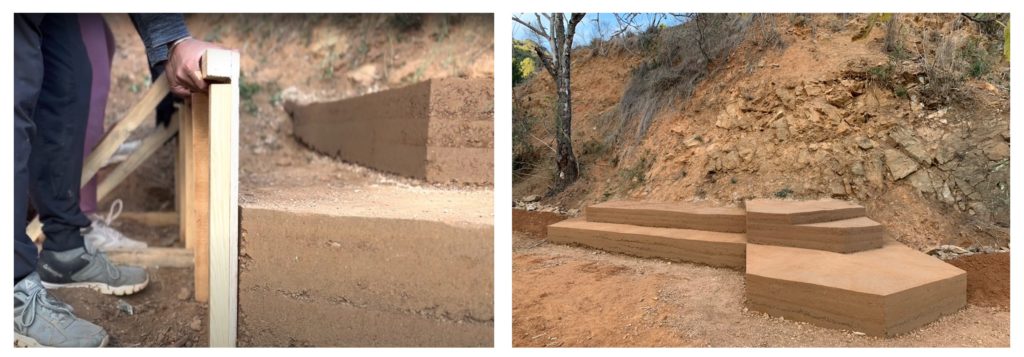As IAAC’s Valldaura Labs and Master in Advanced Ecological Buildings & Biocities (MAEBB) class of 2022/23, we have been given the challenge of working on the activation of a public space that happens to be a transitory space between the city of Barcelona and the regional park of Collserola, specifically honouring the site of Font del Gos, where an infamous, almost mythical fountain existed. As a group, we initiated with the question, how can a traditional and ancient technique be transformed and challenged through advanced digital fabrication techniques?
With a rammed earth fabrication in mind, we started by testing the local soil from Font del Gos site as well as Valldaura Labs’ soil to inspect the difference in their clay percentage while including them in the traditional material mix of 60% of clay-based earth, 30% of fine sand and 10% of lime.
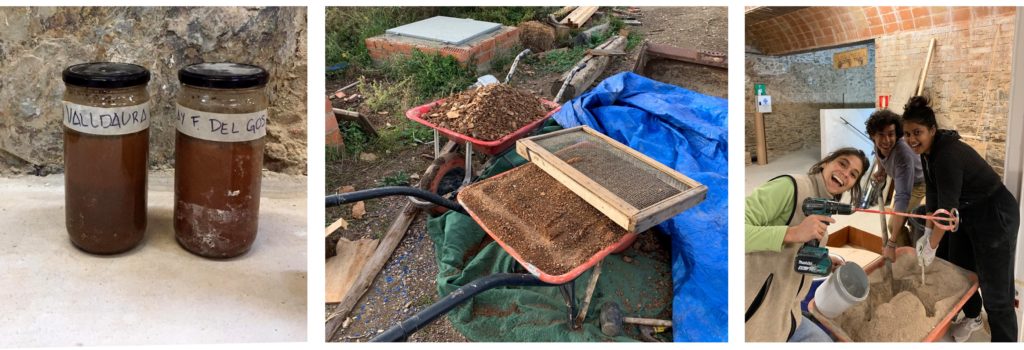
We then proceeded to make tests that evolved from 25 cm cubes, to creating a rectangular cube with a curved side achieved through piled CNC’d plywood. We also explored reliefs by engraving with a CNC the Valldaura logo onto one of the framework’s sides; through this we learned that the engraving on the wood should have been a positive shape, to then have a negative engraving on the clay, which is less vulnerable than a positive relief.

During the span of the project we learnt to use several tools ranging from smaller scale tools like the chop saw to highly advanced tools like the CNC mill to name a few.
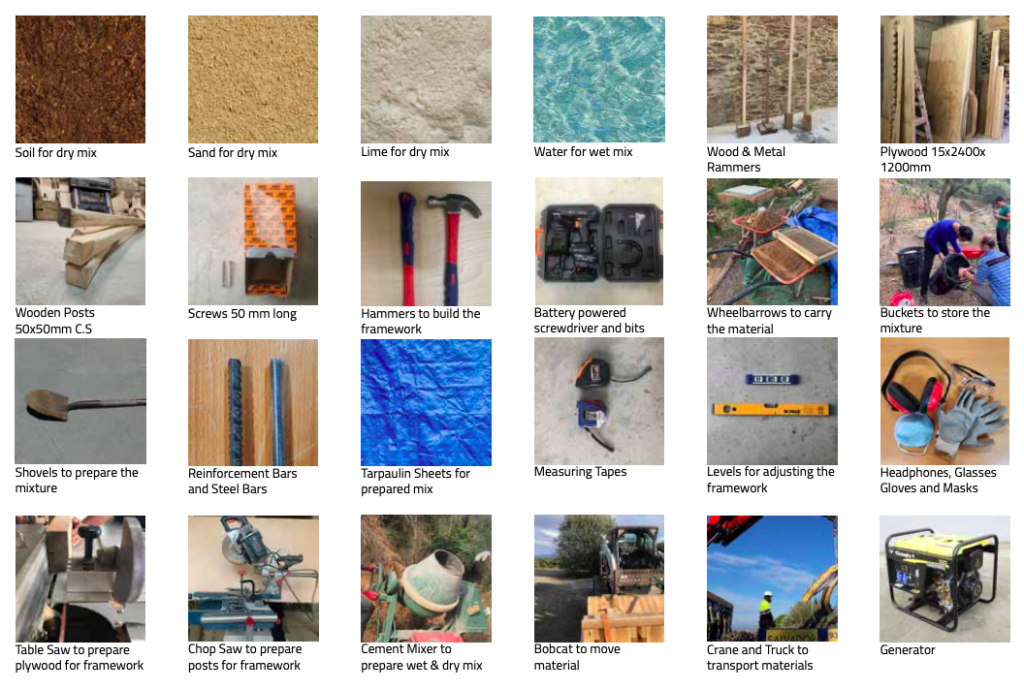
Color degradations in rammed earth were also part of our explorations, and we included pulverized charcoal into the mix. With this experiment, we noticed that the charcoal needed to be very fine, or otherwise it affected the resulting strength of the structure so we decided not to include it in our final framework as it was already going to be an ephemeral structure exposed to natural elements. Considering that we were going to create a site-specific installation onto the local topography, we decided to scale up our tests, and make a framework that 1) would be rammed in the exterior directly on the levelled soil ground, rather than a flat concrete floor, and 2) a framework that would allow us to test how to ram our three desired levels, weather horizontal levels on top of each other versus vertical ones in front of one another.
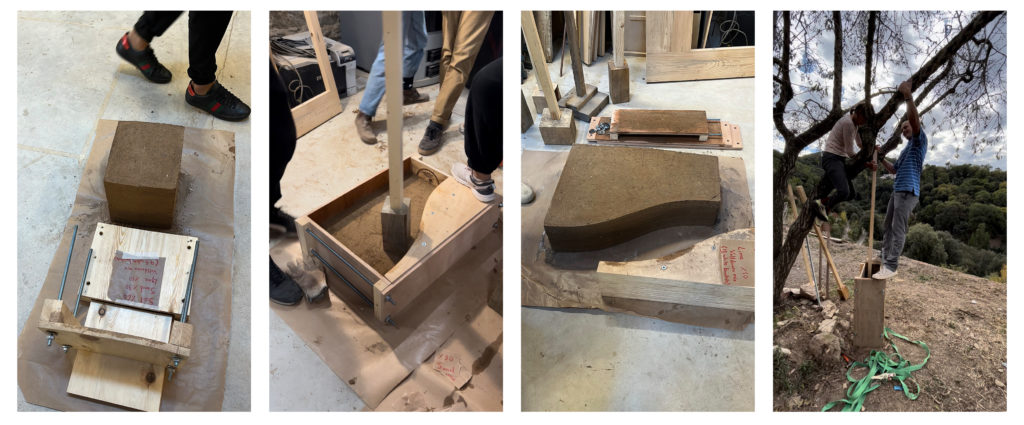
Finally, supported by the softwares Rhinocerous3D and Grasshopper, we concluded on an asymmetric and geometric hexagonal fractal design to create a shape that responded and adapted itself to the existent landscape. The hexagon pattern mirrors the hill and is complexified in every one of the three levels of the landscape bench, concluding in varying hexagons of 60, 90 and 120 cm side length. This aided the process and allowed us to create the formwork.
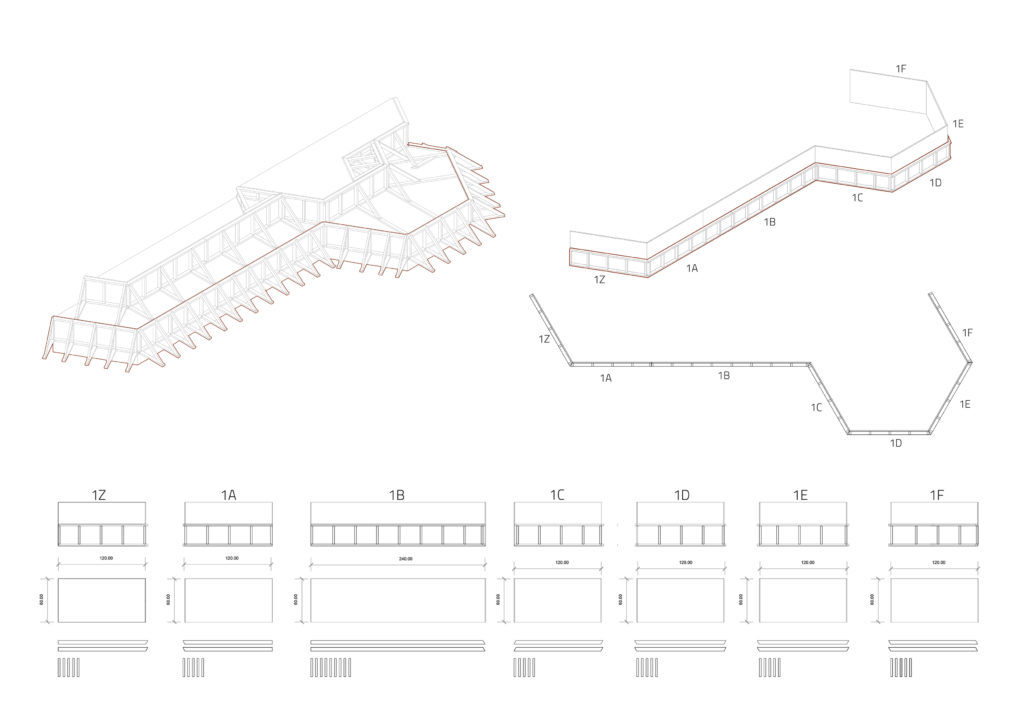
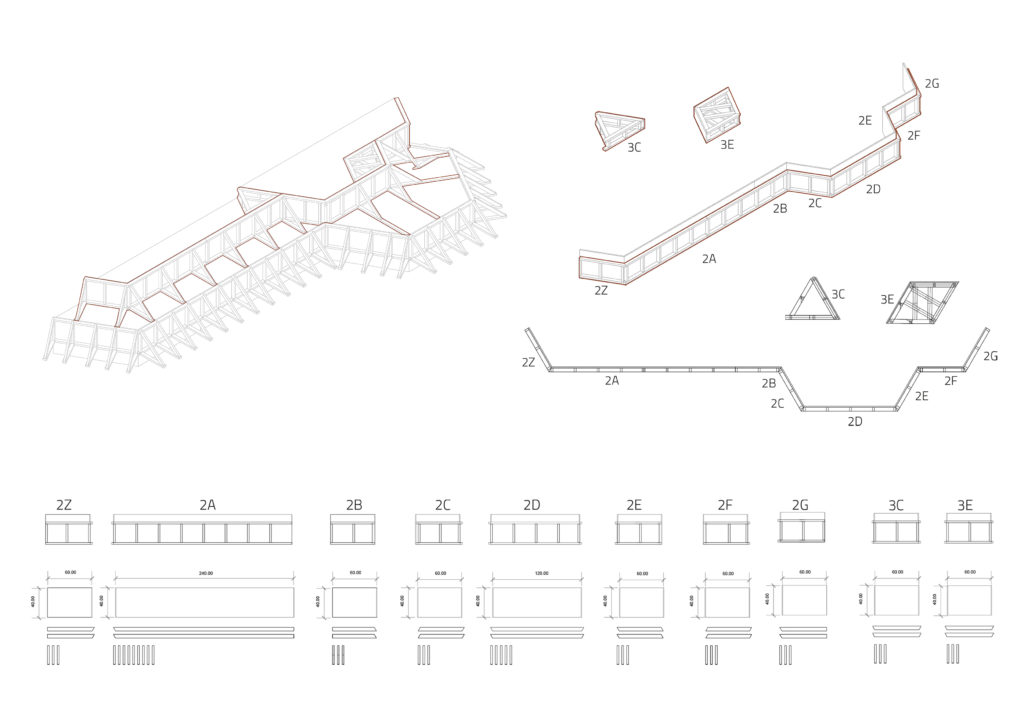
The framework consisted of a 7 meter long by 75 cm height plywood structure, reinforced with wooden frames and supporting diagonals anchored to the ground by ribbed metal rods. It consisted of a main horizontal level labeled Layer 1 where Layer 2 and Layer 3 would be embedded into with 35, 25 and 15 cm heights accordingly. The construction process consisted of building the framework, making the earth mixture, pouring it in and ramming by hand using custom made wooden and metal rammers, until the mix was properly rammed. This was done successfully in the margin of two days for assembling the formwork of the structure and three ramming days to conclude our 4 m3 shape.

The entire journey from testing the soil quality and prototyping to creating the final formwork and ramming the earth on site allowed us to get acclimatized to using tools that were new to us. In doing so through the means of our collaborative design it gave as a deep understanding on how to harness the power of the tools and machines and in doing so improve our design and aid its creation.
